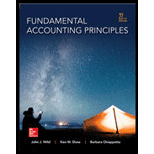
Introduction:
Present value: The present value of a future amount is the worth of the future amount in the present time. The value of an amount today is not the same as the amount tomorrow or in some future date. The worth /value of an amount changes with time as the amount has a time value. The present value of a future amount is calculated by discounting back the future amount to the present, considering the discount rate and the time period for which the amount is discounted as shown below.
Without applying this formula, the present value is calculated by using the present table. Here, present value is calculated by multiplying the future amount with the present discount factor. The present discount factor depends on the discount rate (i) and the time period (n) and it is found from the present table. The present table provides present discount factor for different values of the discount rate (i) and the time period (n).
Future value: The future value of a present amount is the worth of the present amount in the future time. The value of an amount today is not the same as the amount tomorrow or in some future date. The worth /value of an amount changes with time as the amount has a time value. The future value of a present amount is calculated by considering the discount rate/interest rate and the time period for which the amount is discounted as shown below.
Without applying this formula, the future value is calculated by using the future table. Here, future value is calculated by multiplying the present amount with the future discount factor. The future discount factor depends on the discount rate (i) and the time period (n) and it is found from the future table. The future table provides future discount factor for different values of the discount rate (i) and the time period (n).
To determine:
The interest rate that Padley earn for the given investment.
Want to see the full answer?
Check out a sample textbook solution
Chapter B Solutions
Fundamental Accounting Principles -Hardcover
- Cedar Fabricators uses a standard costing system. For its main product, the standard material cost is $14.00 per kilogram and the standard quantity allowed is 3 kilograms per unit. During April, the company purchased 15,000 kilograms of material at $13.75 per kilogram and used 14,200 kilograms to produce 4,600 units. Calculate the material price variance and material quantity variance.arrow_forwardCan you solve this general accounting question with accurate accounting calculations?arrow_forwardPlease provide the accurate answer to this financial accounting problem using appropriate methods.arrow_forward

 AccountingAccountingISBN:9781337272094Author:WARREN, Carl S., Reeve, James M., Duchac, Jonathan E.Publisher:Cengage Learning,
AccountingAccountingISBN:9781337272094Author:WARREN, Carl S., Reeve, James M., Duchac, Jonathan E.Publisher:Cengage Learning, Accounting Information SystemsAccountingISBN:9781337619202Author:Hall, James A.Publisher:Cengage Learning,
Accounting Information SystemsAccountingISBN:9781337619202Author:Hall, James A.Publisher:Cengage Learning, Horngren's Cost Accounting: A Managerial Emphasis...AccountingISBN:9780134475585Author:Srikant M. Datar, Madhav V. RajanPublisher:PEARSON
Horngren's Cost Accounting: A Managerial Emphasis...AccountingISBN:9780134475585Author:Srikant M. Datar, Madhav V. RajanPublisher:PEARSON Intermediate AccountingAccountingISBN:9781259722660Author:J. David Spiceland, Mark W. Nelson, Wayne M ThomasPublisher:McGraw-Hill Education
Intermediate AccountingAccountingISBN:9781259722660Author:J. David Spiceland, Mark W. Nelson, Wayne M ThomasPublisher:McGraw-Hill Education Financial and Managerial AccountingAccountingISBN:9781259726705Author:John J Wild, Ken W. Shaw, Barbara Chiappetta Fundamental Accounting PrinciplesPublisher:McGraw-Hill Education
Financial and Managerial AccountingAccountingISBN:9781259726705Author:John J Wild, Ken W. Shaw, Barbara Chiappetta Fundamental Accounting PrinciplesPublisher:McGraw-Hill Education





